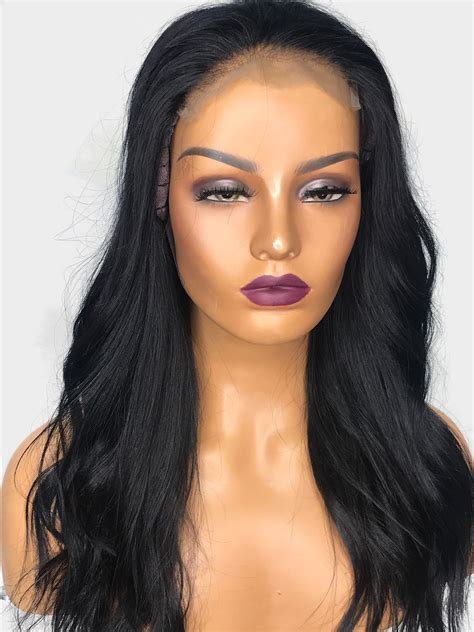Introduction
Wigs have become an integral part of the fashion and beauty industry, offering countless possibilities for transforming one’s appearance and expressing their individuality. From iconic Marilyn Monroe curls to Beyoncé’s sleek bobs, wigs have been gracing the heads of celebrities and fashionistas alike for centuries. In this comprehensive guide, we will delve into the world of wigs, exploring the different types, benefits, and applications, and providing expert advice on choosing and caring for your perfect wig.

Types of Wigs
Wigs come in a wide variety of types and styles, each designed to cater to specific needs and preferences. Here are the most common types of wigs:
-
Lace Front Wigs: These wigs feature a delicate lace frontal that creates the illusion of a natural hairline, providing a seamless and undetectable transition from wig to skin.
-
Full Lace Wigs: The crème de la crème of wigs, full lace wigs are constructed with a lace cap that covers the entire head, allowing for maximum customization and versatility in styling.
-
Human Hair Wigs: Made from 100% human hair, these wigs offer the most natural look and feel, allowing for styling with heat tools and blending seamlessly with your own hair.
-
Synthetic Wigs: Crafted from synthetic fibers, these wigs are typically more affordable than human hair wigs and come in a vast range of colors and styles.
-
Hybrid Wigs: A combination of human hair and synthetic fibers, hybrid wigs offer a balance of natural appearance and affordability.
Benefits of Wearing Wigs
Wigs offer a myriad of benefits, including:
-
Instant Hair Transformation: Wigs allow you to change your hair color, style, and length instantly, without the commitment of a permanent hair makeover.
-
Hair Protection: Wigs can protect your natural hair from damage caused by heat styling, chemical treatments, and environmental factors.
-
Medical Reasons: Wigs can provide a discreet and stylish solution for individuals experiencing hair loss due to medical conditions or treatments.
-
Versatility: Wigs offer endless styling possibilities, empowering you to experiment with different looks and express your personality through your hair.
Choosing the Right Wig
Selecting the right wig is crucial to achieving a natural and flattering appearance. Consider the following factors:
-
Face Shape: Opt for wigs that complement your face shape. Oval faces can wear most styles, while round faces benefit from wigs with volume at the crown, and square faces look best with soft, rounded layers.
-
Hair Texture and Color: Choose wigs with a texture and color that closely match your own hair for a seamless blend.
-
Wig Cap Size: Measure your head circumference to determine the correct wig cap size for a comfortable fit.
-
Personal Style: Select a wig that aligns with your personal style and lifestyle.
Caring for Your Wig
Proper care is essential to prolong the life and maintain the beauty of your wig. Follow these tips:
-
Wash Regularly: Wash your wig every 6-8 wears using a gentle shampoo and conditioner designed for wigs.
-
Detangle Gently: Use a wide-toothed comb or a wig brush to remove tangles carefully, starting from the ends and working your way up to the roots.
-
Avoid Heat Styling: Limit the use of heat styling tools on synthetic wigs. If necessary, use low heat settings and protect the wig with a heat protectant spray.
-
Store Properly: When not in use, store your wig on a wig stand or in a silky bag to prevent tangles and damage.
Applications of Wigs Beyond Fashion
Wigs are not just limited to fashion and beauty. They have also found practical applications in various fields:
-
Medical: Wigs provide a discreet and comfortable solution for cancer patients undergoing chemotherapy or other treatments that cause hair loss.
-
Theater and Entertainment: Wigs are essential for actors and performers to transform into different characters and create memorable stage appearances.
-
Religious and Cultural: Wigs are worn for religious or cultural reasons in many cultures, such as the Orthodox Jewish community and the drag culture.
-
Cosplay: Wigs are widely used in cosplay to create authentic costumes for anime, manga, and video game characters.
Comparison of Human Hair and Synthetic Wigs
Human hair wigs offer a more natural appearance and feel, but they require more maintenance and are more expensive. Synthetic wigs, on the other hand, are more affordable, come in a wider range of styles, and are easier to care for, but they may not look as natural as human hair wigs.
Pros and Cons of Wearing Wigs
Pros:
- Instant hair transformation
- Hair protection
- Medical benefits
- Versatility
- Confidence boost
Cons:
- Cost (especially for human hair wigs)
- Maintenance
- Potential for scalp irritation
- Limited breathability
Conclusion
Wigs are a versatile and powerful tool that can transform your appearance, protect your hair, and express your individuality. Whether you’re looking for a stylish accessory or a solution for hair loss, there’s a wig out there to meet your every need. By following the expert advice provided in this guide, you can choose and care for your perfect wig, unlocking the countless benefits and possibilities it offers. Embrace the world of wigs and let your hair journey be one of endless transformation and self-expression.
Additional Resources
- American Academy of Dermatology: Hair Loss
- National Cancer Institute: Hair Loss and Chemotherapy
- The Knot: Human Hair vs. Synthetic Hair Wigs: What’s the Difference?
